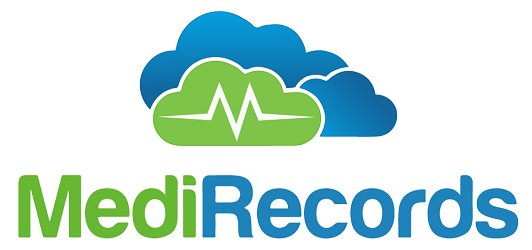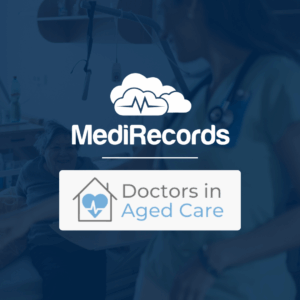
Ask anyone working in digital health today, particularly those investing or looking for solutions to support new models of care, and they’ll tell you: all innovation is happening in the cloud. From startups launching AI diagnostic tools, coding agents, and voice assistants for booking and admin, to government projects aimed at connecting national health systems, everything modern is being built on cloud infrastructure.
Cloud is no longer a technology trend. It is the new normal.
At MediRecords, we see this shift as driven by more than convenience or cost-cutting. It is structural, it is inevitable, and it is being driven by real demand and expectations from service providers, clinicians, and most importantly, patients. In 2025, cloud-based technology has become the clearest signal of innovation in healthcare and the most practical way to achieve the productivity gains the system so urgently needs.
Whether you are a startup, a health service, or a government agency, cloud is no longer a nice-to-have. It is the bare minimum, and every new dollar of investment is chasing it.
Why cloud matters in digital health
The cloud is not just another way to host software. It is a different way to build, deliver, and keep improving it. Here’s why cloud-native solutions are leading the way:
- Real interoperability: National health infrastructure is API-based, and that is where the future is heading. My Health Record, IHI, Provider Connect Australia, and the Service Locator are all part of an API ecosystem. Cloud-native systems are built to plug into these environments seamlessly, supporting information sharing at the point of care with the reliability and resilience of cloud hosting.
- AI enablement: From clinical decision support to smart assistants and summarisation tools, AI runs best where it was designed to, on the cloud. Cloud makes AI scalable, secure, and accessible without the need for costly hardware. At the Medical Software Industry Association (MSIA) forum in July, AI was called out as both an opportunity and a risk. AI scribes, triage tools and predictive analytics are recognised as critical enablers of safety and efficiency, but there are also new cyber threats, with attackers using generative tools to launch sophisticated campaigns. Cloud platforms offer the enterprise-grade security, zero-trust frameworks and rapid patching that healthcare now requires.
- Data-driven care: Cloud platforms unlock live analytics and reporting that go far beyond static PDFs or siloed spreadsheets. Think population health insights, service delivery metrics, and predictive alerts, available in real time.
- Lower overheads: No servers to manage and no on-site maintenance. Cloud reduces the total cost of ownership while accelerating change. Less drag, more delivery.
- Always up to date: Continuous upgrades mean your platform improves every few weeks, not every few years. That is the speed clinicians and patients expect today.
- Productivity through scale and innovation: Cloud is not just about what is possible today, it is about what becomes possible tomorrow. From smarter workflows and automation to seamless integrations and flexible deployment models, cloud platforms open new ways of working. Providers can scale efficiently, deploy services faster, and deliver care in ways that traditional systems cannot support.
Cloud as the productivity engine
The recent MSIA conference sharpened this focus. Digital health reform is no longer about modernisation for its own sake; it is about driving system-wide productivity. Rising demand, workforce shortages and growing administrative burden mean the health system must deliver more with less.
Cloud-native platforms, built on FHIR standards and national interoperability, enable real-time data sharing, automation and AI in ways that reduce duplication, shorten wait times, and free up clinicians for patient care.
Seen this way, cloud is more than a proxy for innovation. It is the engine of productivity. In health, innovation and productivity are inseparable. Innovation that does not deliver productivity will not scale, and productivity gains without innovation will stall.
Government signals: Cloud as a strategic pillar
The federal government’s Sharing by Default Act 2025 is a milestone, requiring pathology and diagnostic imaging results to flow automatically into My Health Record. The upcoming National Digital Medicines Strategy (2025–2030) will go further, embedding interoperable, cloud-enabled medicines management into the foundations of the system.
Policy language now makes it clear: “information sharing by default, near real time, at the point of care” is the goal. That is only achievable with cloud-native systems that speak fluent API.
Procurement patterns are already shifting. It is increasingly difficult to win a government contract or even make it to tender without being cloud-enabled.
Clinicians are also driving this change. Next-generation doctors are digital natives. They expect intuitive, mobile-responsive, fast-evolving tools that feel more like Spotify or Canva than clunky desktop software. Patients expect the same: digital front doors, secure portals to access personal information, cost transparency, and notifications that help them manage their care.
Investment dollars also tell the story. Every new venture-backed digital health company in Australia is building for the cloud. There is simply no appetite to fund new on-premise apps.
Finally, security is no longer a barrier to cloud, it is a benefit. Cloud platforms provide enterprise-grade security, encrypted communications, and high availability that far exceed what most local deployments can offer. In today’s environment, cloud has become the safer, more resilient choice.
Evidence that digital maturity and connected systems delivers results
The evidence for digital transformation in Australia is compelling.
- Queensland’s transition to integrated digital hospitals achieved a 40% reduction in medication incidents and a 70% reduction in prescribing errors.
- Digital-first cardiac rehabilitation programs have demonstrated up to 71% reductions in readmission bed days, proving that connected care can improve outcomes and reduce costs.
- Studies of digital maturity in Queensland health services show that higher-maturity, interoperable systems are associated with better patient experience, improved staff satisfaction, and perceptions of safer care.
Cloud as the path to digital maturity
These improvements arise from digital maturity, not hosting models alone. But cloud is increasingly the only realistic way to achieve and sustain that maturity at scale. Recent Australian examples demonstrate the benefits. NSW Health’s migration of clinical applications to AWS Cloud improved application performance, halved the time to deploy new environments, and freed clinicians from manual IT work. A trans-Tasman review of 66 cloud-enabled healthcare use cases found consistent gains in productivity, patient access, and system equity. And in community pharmacy, electronic prescribing and digital medication records, often delivered via cloud platforms, have streamlined workflows and improved medication safety.
Cloud does not just enable new technology; it provides the structural resilience, interoperability, and scalability that allow digital systems to deliver measurable improvements in outcomes and efficiency.
MediRecords: A case study in cloud-driven innovation
MediRecords was built in the cloud from day one, not retrofitted or migrated. That foundation lets us partner with the most forward-thinking health programs, providers, and digital vendors across the country.
We are already helping modern care models take shape:
- Telehealth providers using MediRecords to deliver digital-first consultations without legacy drag.
- AI partners are integrating with our APIs to provide summarisation, smart triage, and workflow automation.
- Analytics through our soon-to-be-released Clarity module, giving providers real-time insights into service usage, clinician performance, and patient outcomes.
We connect natively with Australia’s API-based government digital infrastructure, ensuring our customers can operate seamlessly across national systems. Our containerised implementation of OntoServer (CSIRO’s terminology server) provides scalable clinical decision support and structured interoperability as a managed service.
Just as importantly, our open APIs empower healthcare organisations to shape their own digital future by connecting enterprise systems, building digital front doors for patients, and innovating beyond the clinic walls.
Conclusion: The cloud test
If you are evaluating a new digital health solution, whether it’s practice management, patient engagement, analytics or anything related, ask this first: is it cloud-native?
If not, it is already out of step with:
- Where government policy is going
- Where clinicians and patients expect to be
- Where investment dollars are flowing
In 2025, cloud is not just infrastructure. It is the benchmark for innovation and productivity in digital health.
In healthcare, innovation that does not deliver productivity is unsustainable. Productivity gains without innovation pathways, quickly erode. Cloud is where the two converge, and where the future of healthcare is being built.
References
- Queensland Health. Digital Hospital Benefits Realisation Report. Cited in MSIA, 2021.
- Neubeck L, et al. Digital cardiac rehabilitation: systematic review and meta-analysis. Eur J Prev Cardiol. 2020.
- Woodruffe S, et al. Effects of a digitally enabled cardiac rehabilitation intervention on risk factors, recurrent hospitalization and mortality: a randomized controlled trial. European Heart Journal – Digital Health. 2025
- Adler-Milstein J, et al. Evaluating Digital Health Capability at Scale Using the Digital Health Indicator. Appl Clin Inform. 2021.
- Thiru K, et al. Perceived Impact of Digital Health Maturity on Patient and Staff Experience in Queensland. Int J Med Inform. 2023.
- eHealth NSW. Case Study: Clinical Applications Migrated to AWS Cloud. 2022.
- AWS Institute. Benefits of Cloud-Enabled Healthcare in Australia & New Zealand. 2022.
- Hussain R, et al. Electronic health records and e-prescribing in Australian community pharmacies. Int J Med Inform. 2024.
- MediRecords partners with General Practice Registrars Australia - 04/11/2025
- MediRecords joins forces with Doctors in Aged Care - 28/10/2025
- MediRecords launches Engage Patient Portal - 08/10/2025





